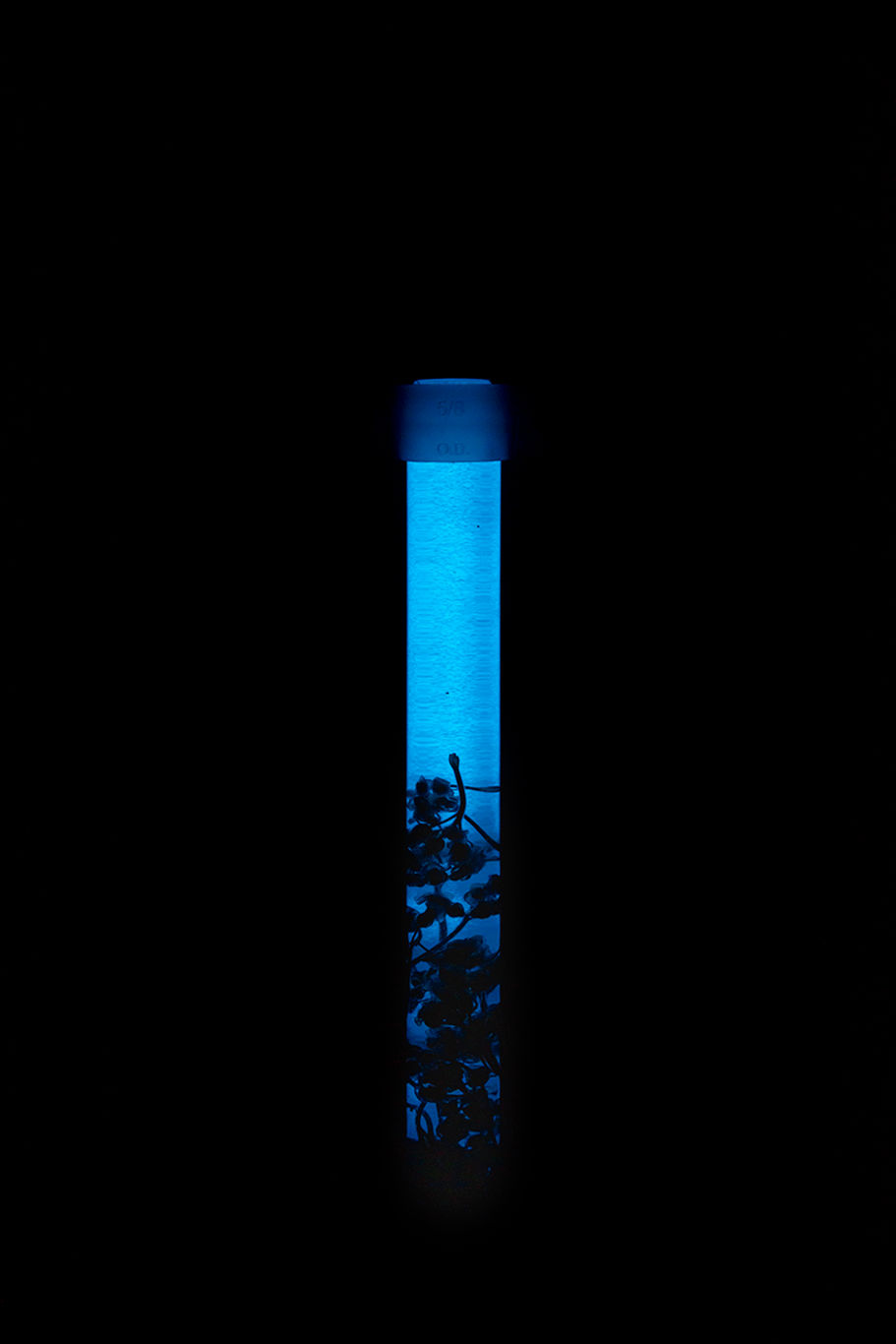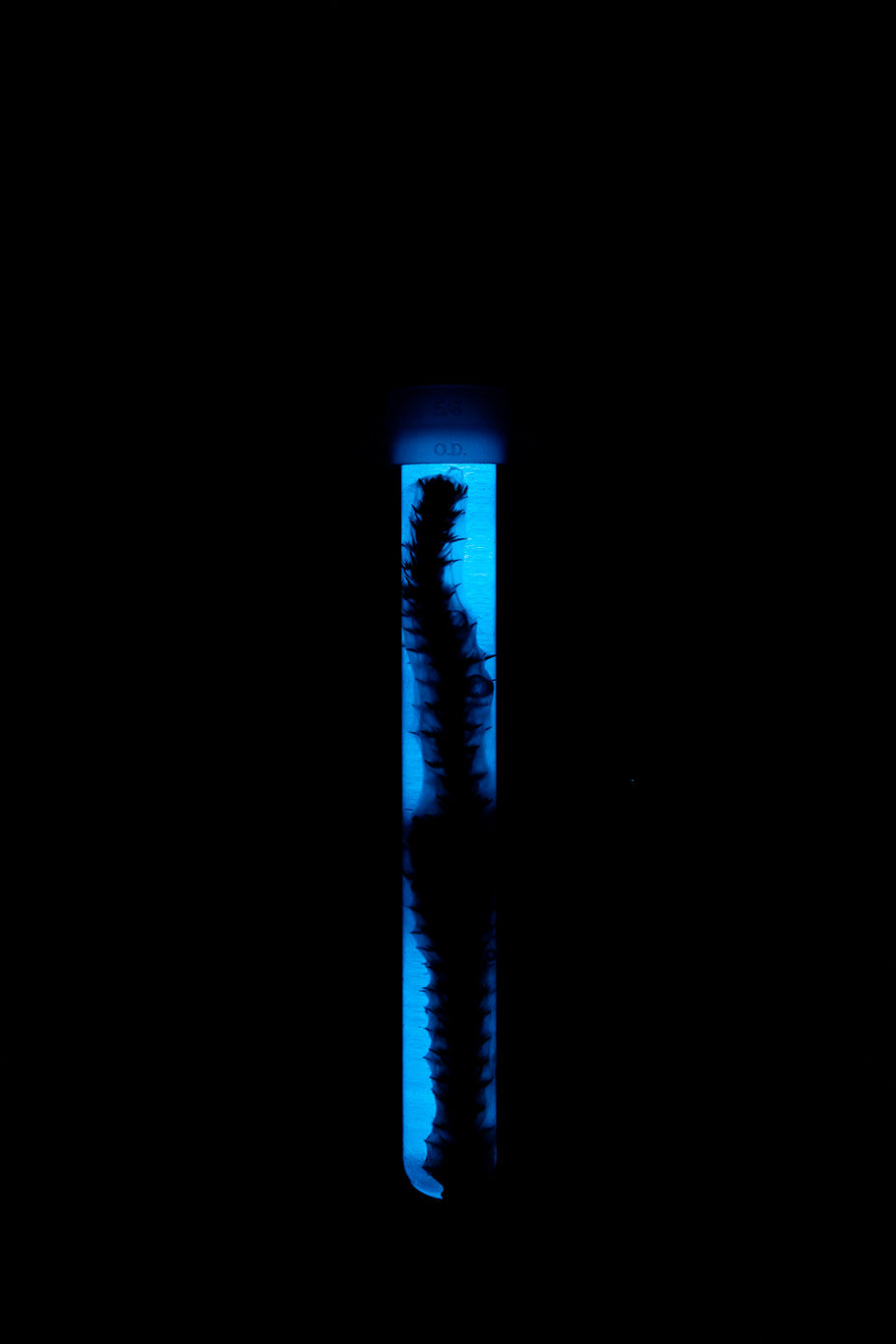SHOHEI KATAYAMA
ANCIENT VOICES
“For many years, I have been moved by the blue at the far edge of what can be seen, that color of horizons, of remote mountain ranges, of anything far away. The color of that distance is the color of an emotion, the color of solitude and of desire, the color of there seen from here, the color of where you are not. And the color of where you can never go...Leave the door open for the unknown, the door into the dark. That’s where the most important things come from, where you yourself came from, and where you will go.”
- Rebecca Solnit, A Field Guide To Getting Lost
Ancient Voices reflects on the fragile interconnectedness between human presence, environmental systems, and the invisible forces that shape them. It is grounded in a 2018 expedition to the Arctic Circle, where water samples were collected to trace radioactive particles from Fukushima. The experience shifted from political inquiry to a deeper observation of ecological systems, revealing how even the most remote environments carry the marks of human activity.
A key moment during the expedition occurred when a marine biologist explained the role of Arctic diatoms. These microscopic algae rely on nutrients from calving glaciers and are essential to the planet’s carbon cycle. They produce marine snow that feeds ocean ecosystems and sequesters carbon in the deep sea. Diatom blooms, sometimes visible from space, can spread across vast areas through global currents. This moment emphasized the complex relationships that exist across micro and macro scales and reinforced the idea that all living and nonliving systems are interconnected.
At the center of the installation is a glowing floor structure modeled after the bioluminescent pattern of an atolla jellyfish. Created with strontium aluminate, it emits a soft glow that references natural phosphorescence and historical links to nuclear material. When a viewer steps into the space, a dark orb slowly descends. Although visitors are asked not to step on the glowing surface, footprints accumulate over time. This quiet disruption reflects how human behavior leaves traces, even when intentions are clear.
A nearby painting, composed of microscopic imagery layered onto a glacial landscape, also uses strontium aluminate. Its twenty-year glow parallels current projections for accelerated glacial melt in the Northern Hemisphere. In another space, specimens gathered from Spitsbergen are presented in glass vessels and lit to form stark silhouettes. These include seeds, bones, minerals, and organic fragments, and were collected in response to the damage sustained by the Global Seed Vault due to melting permafrost.
The installation invites reflection on the relationship between planetary systems and the human condition. It offers interconnectedness as a framework for understanding environmental and emotional complexity. In a time when climate change affects not only landscapes but also mental health, the work encourages awareness, action, and resilience. It points toward the possibility of healing through collective engagement, scientific knowledge, and sustained creative inquiry.
Material: Strontium Aluminate, Kopp Glass 40 filter, UV light, Arduino, motor, audio of deep-sea currents captured via goPro, specimens collected from the Spitsbergen, Norway. * Strontium Aluminate has a half-life of 20 years - roughly when glaciers in the Northern hemisphere are expected to melt at a rapid rate.
Location: Miller ICA, 3rd floor.
Photography by: Tom Little

30' x 30' Strontium Aluminate dusted on the floor, Arduino, motor

30' x 30' Strontium Aluminate dusted on the floor, Arduino, motor

30' x 30' Strontium Aluminate dusted on the floor, Arduino, motor


Footprint of a visitor.


80" x 360" Strontium Aluminate, acrylic.

Svalbard Poppy seed

Barley wrapped in a spider web

3/8" x 6.5" (30) Strontium Aluminate, specimens collected from Spitsbergen suspended in mineral oil.




